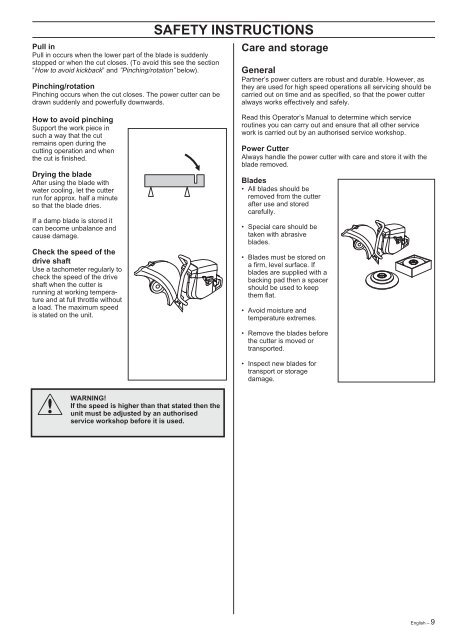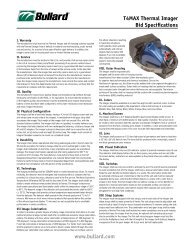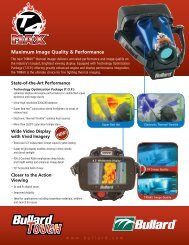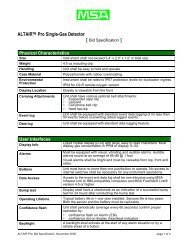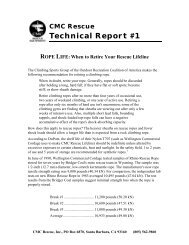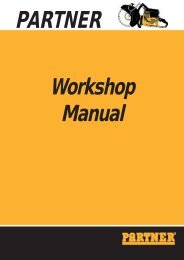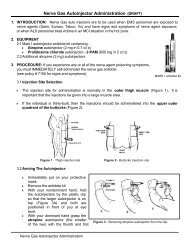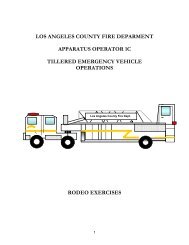PARTNER K950 Operators Manual 1998.pdf
PARTNER K950 Operators Manual 1998.pdf
PARTNER K950 Operators Manual 1998.pdf
You also want an ePaper? Increase the reach of your titles
YUMPU automatically turns print PDFs into web optimized ePapers that Google loves.
Pull in<br />
Pull in occurs when the lower part of the blade is suddenly<br />
stopped or when the cut closes. (To avoid this see the section<br />
”How to avoid kickback” and ”Pinching/rotation” below).<br />
Pinching/rotation<br />
Pinching occurs when the cut closes. The power cutter can be<br />
drawn suddenly and powerfully downwards.<br />
SAFETY INSTRUCTIONS<br />
Care and storage<br />
General<br />
Partner’s power cutters are robust and durable. However, as<br />
they are used for high speed operations all servicing should be<br />
carried out on time and as specified, so that the power cutter<br />
always works effectively and safely.<br />
How to avoid pinching<br />
Support the work piece in<br />
such a way that the cut<br />
remains open during the<br />
cutting operation and when<br />
the cut is finished.<br />
Drying the blade<br />
After using the blade with<br />
water cooling, let the cutter<br />
run for approx. half a minute<br />
so that the blade dries.<br />
If a damp blade is stored it<br />
can become unbalance and<br />
cause damage.<br />
Check the speed of the<br />
drive shaft<br />
Use a tachometer regularly to<br />
check the speed of the drive<br />
shaft when the cutter is<br />
running at working temperature<br />
and at full throttle without<br />
a load. The maximum speed<br />
is stated on the unit.<br />
Read this Operator’s <strong>Manual</strong> to determine which service<br />
routines you can carry out and ensure that all other service<br />
work is carried out by an authorised service workshop.<br />
Power Cutter<br />
Always handle the power cutter with care and store it with the<br />
blade removed.<br />
Blades<br />
• All blades should be<br />
removed from the cutter<br />
after use and stored<br />
carefully.<br />
• Special care should be<br />
taken with abrasive<br />
blades.<br />
• Blades must be stored on<br />
a firm, level surface. If<br />
blades are supplied with a<br />
backing pad then a spacer<br />
should be used to keep<br />
them flat.<br />
• Avoid moisture and<br />
temperature extremes.<br />
• Remove the blades before<br />
the cutter is moved or<br />
transported.<br />
• Inspect new blades for<br />
transport or storage<br />
damage.<br />
!<br />
WARNING!<br />
If the speed is higher than that stated then the<br />
unit must be adjusted by an authorised<br />
service workshop before it is used.<br />
English – 9


